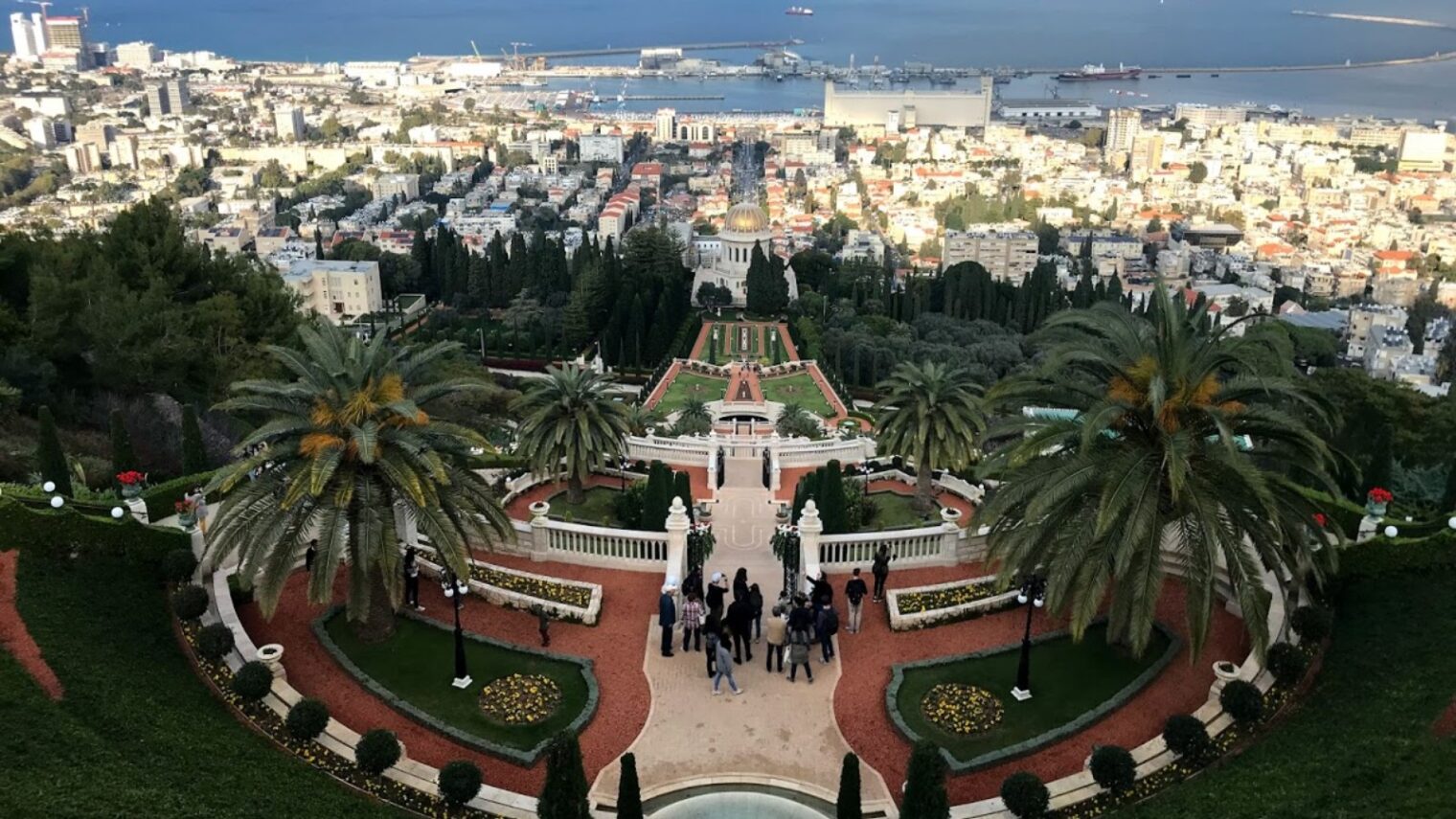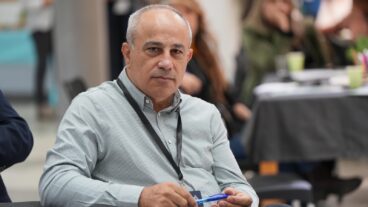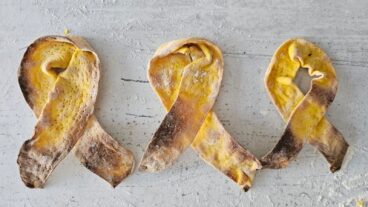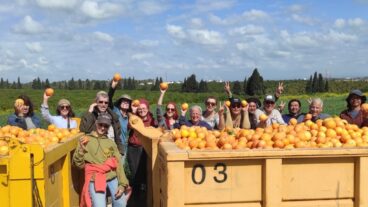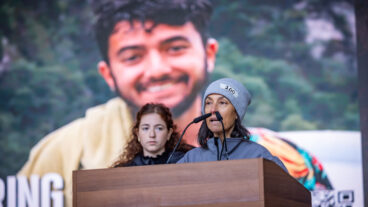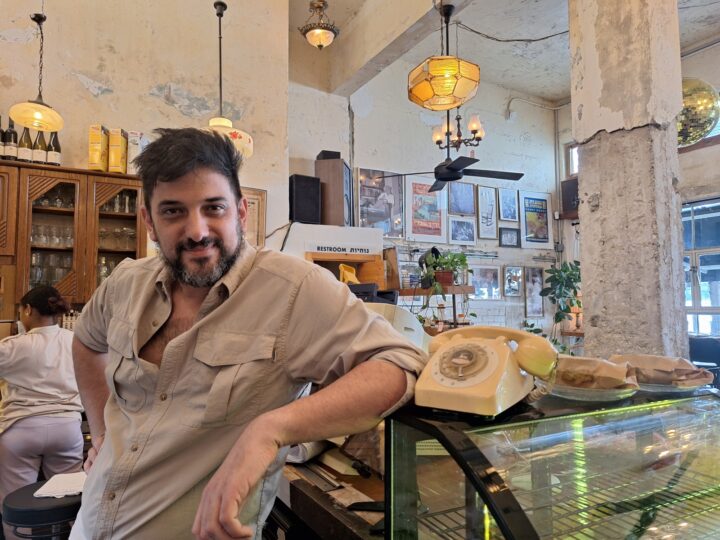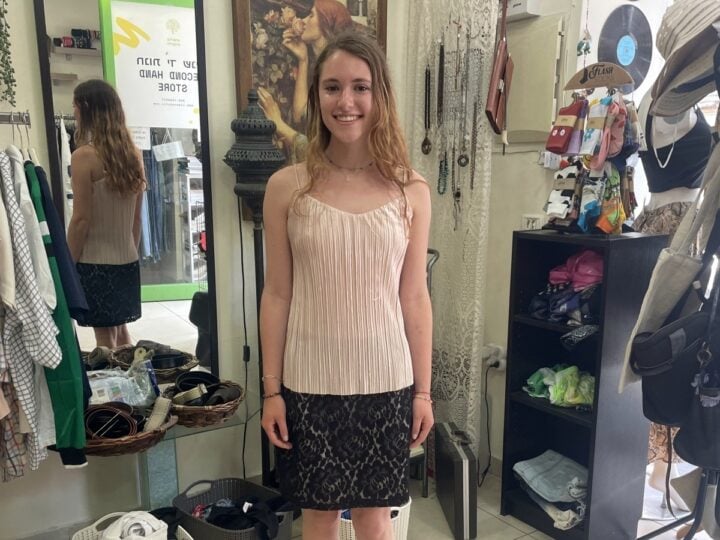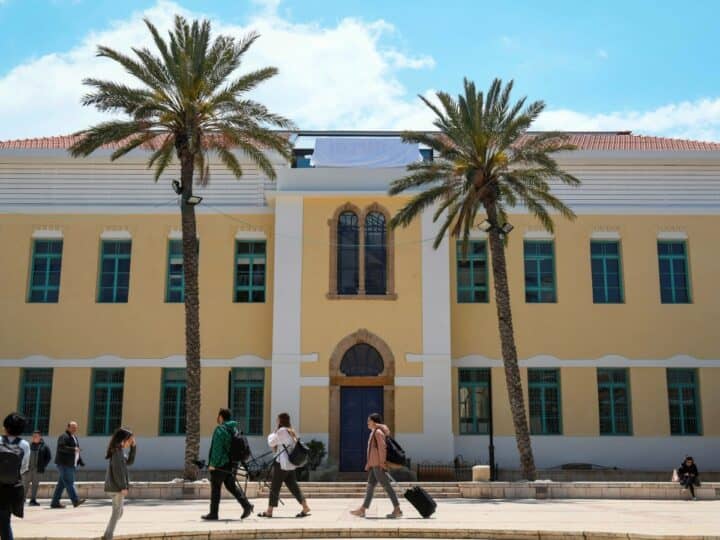When planning your visit to Israel, it’s really nice to include some activities that don’t cost money.
Below we’ve listed five places in each of the three largest cities – Jerusalem, Tel Aviv and Haifa – as well as in other parts of Israel where you can be entertained and educated without reaching for your wallet.
Have you come across other great free destinations in your travels around Israel? Please share them in the comments section.
FIVE IN JERUSALEM
Free guided tours of the Knesset (Parliament) and Supreme Court ordinarily would top our list, but they have been suspended during the pandemic. For now, visitors can enjoy many other free activities including these.
The Old City
The most visited (and most Instagrammed) free tourist spot in Israel is the Old City’s Western Wall (Kotel), a remnant of the retaining wall of the Herodian Second Temple complex.
Other famous holy sites you’ll see in the Old City are, to name just a few, the Temple Mount, Dome of the Rock (Al-Aqsa Mosque), Hurva Synagogue (tours for a fee), Church of the Holy Sepulcher and Via Dolorosa.
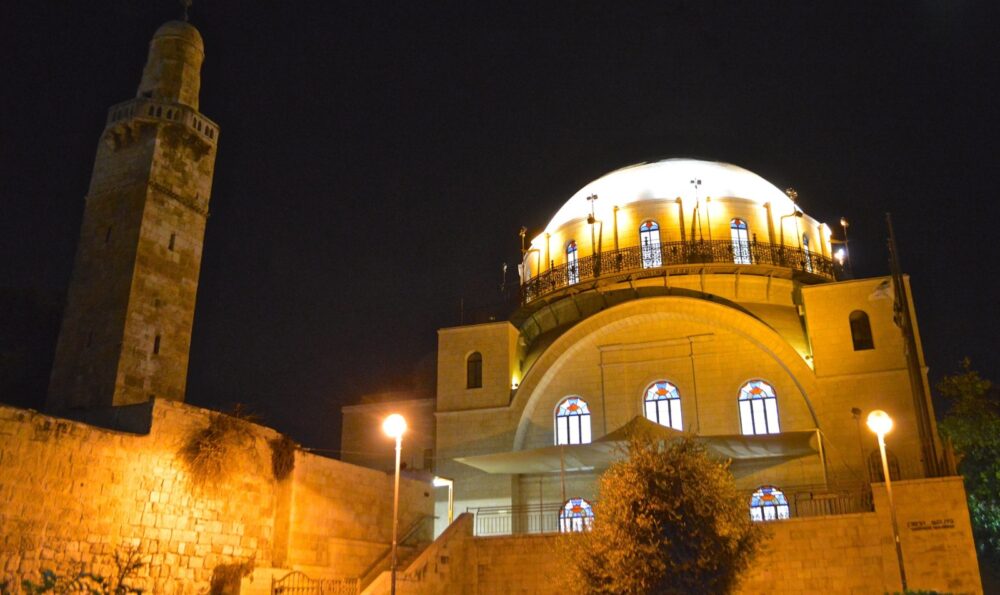
Each quarter of the Old City – Armenian, Jewish, Christian, Muslim – has its own ambiance and vibe. As there’s a story behind practically every stone of the Old City, this is the place to get familiar with history, theology and archeology.
Wohl Rose Garden
One of the sweetest-smelling gardens in the country, the Wohl Rose Garden is in the Givat Ram Quarter at the foot of the Supreme Court and directly opposite the Knesset.
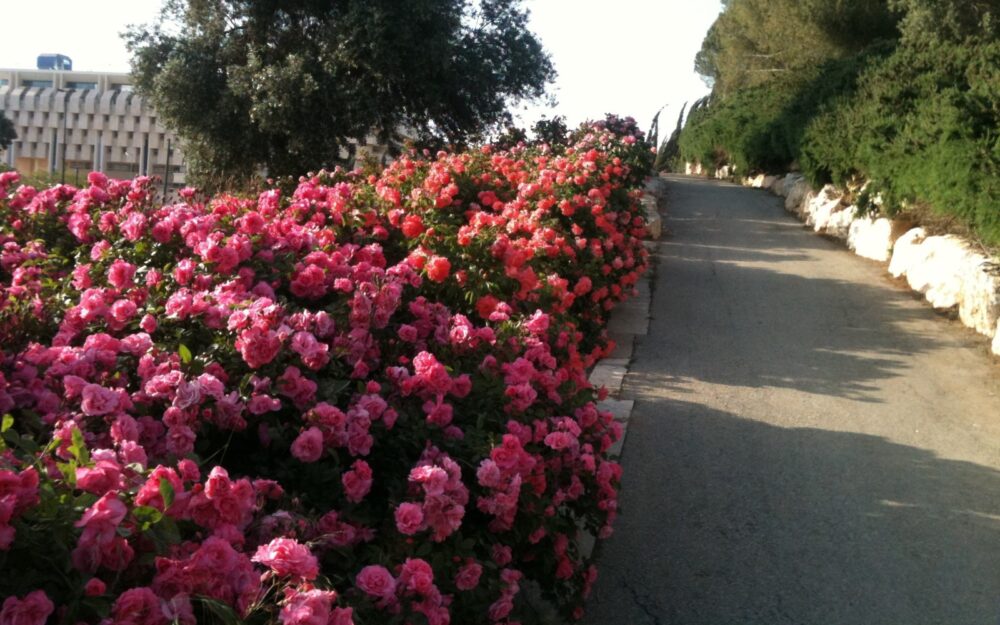
Opened in 1981, this 19-acre public garden boasts 15,000 rose bushes representing more than 450 varieties. It was named one of the 11 most beautiful rose gardens in the world.
Wohl also comprises expansive lawns, hills, quarries, an ornamental fishpond, waterfall, sculptures and a sixth-century mosaic floor.
Jerusalem Bird Observatory
Every year, one billion feathered visitors migrate through Israel. The 1.5-acre Jerusalem Bird Observatory has a strategic location on this route in a surprising urban location between the Knesset and the Supreme Court.
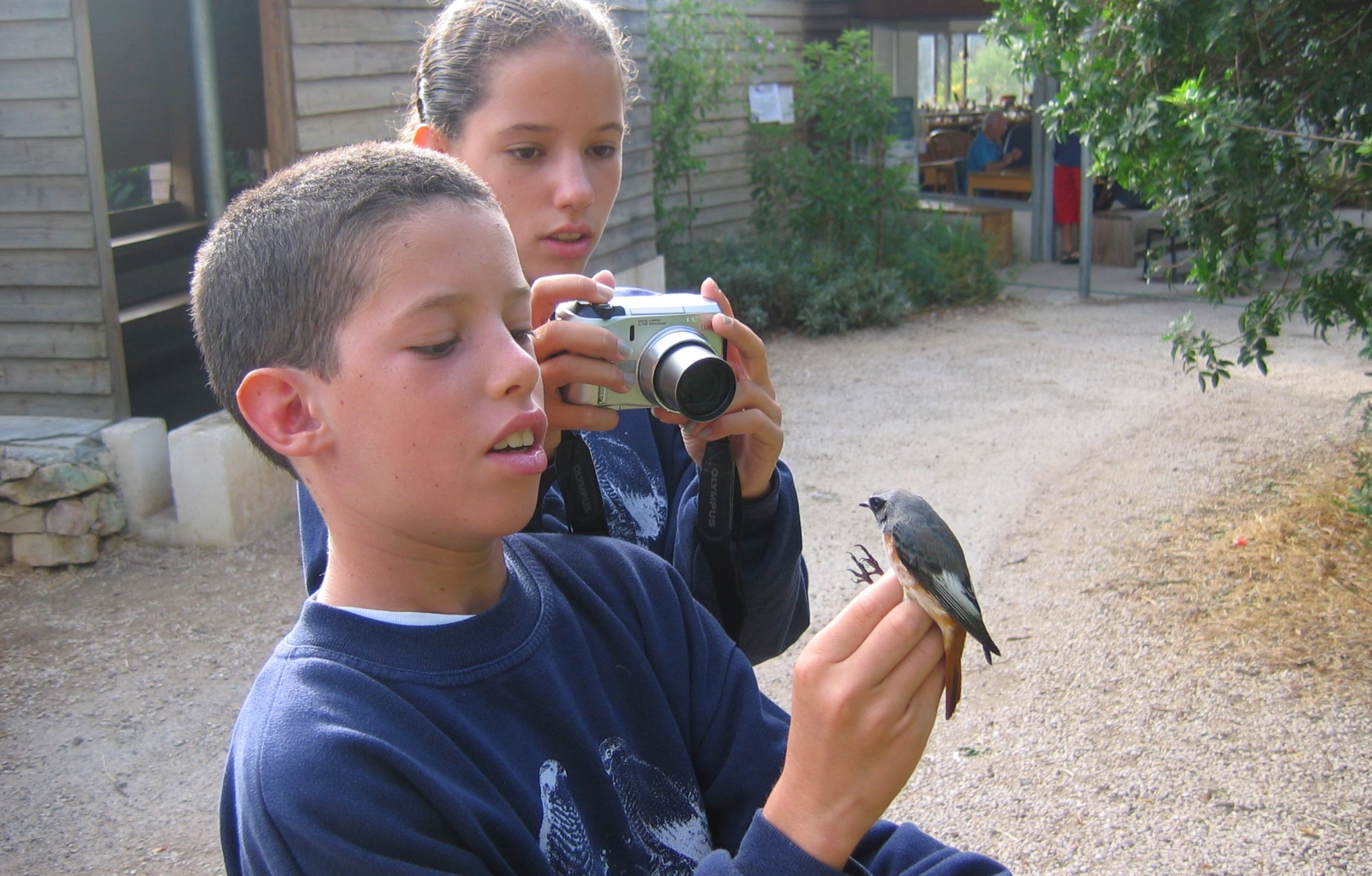
The heart of the site is the Beracha Bird Hide, where visitors have a great view of the pond and surrounding fruit trees. The hide is open 24/7 at no cost.
Every day from March to May, visitors can observe bird-banding (ringing) sessions and get identification tips from the staff and volunteers. A visitor center is open Sunday to Thursday from 9-3, with a gift shop, library, and Gail Rubin Nature Art Gallery.
There are a variety of walks, lectures, workshops and trips offered in English and Hebrew throughout the year. Details: +973 (0)2-653-7374, jbo@inter.net.il.
Gazelle Valley
Gazelles in the city? Yes, here at Gazelle Valley in the Givat Mordechai neighborhood lives a herd of endangered mountain gazelles.
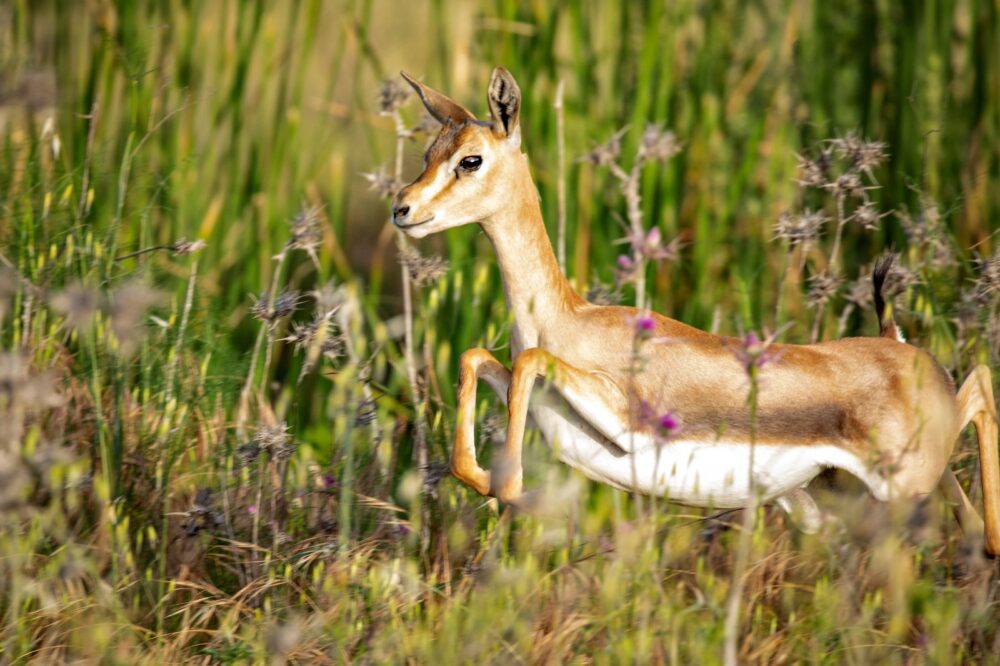
The park’s carefully nurtured ecosystem includes more than 500 species of plant life, many of which were reintroduced to recreate the original flora that existed in the mountains of Jerusalem prior to the 20th century.
Gazelle Valley also hosts about 170 migratory and resident bird species as well as arthropods, reptiles, amphibians and small mammals. There are four ponds fed by an ecological water circulation system, plentiful picnic spots, and a refuge for Greek tortoises rescued from people who took them from the wild illegally.
Yad Vashem: The World Holocaust Remembrance Center
The sprawling Yad Vashem complex includes 30 components. The main building, the Holocaust History Museum, emphasizes the experiences of the individual victims through original artifacts, survivor testimonies and personal possessions, and opens to the Hall of Names — a repository for the Pages of Testimony of millions of Holocaust victims and a memorial to those who perished at the hands of the Nazis. The balcony where you end your free visit affords a stunning and hopeful panoramic view of Jerusalem.
Visits must be scheduled online. Entrance to the Holocaust History Museum is for ages 10 and up.
FIVE IN TEL AVIV
The most obvious free attraction in the City That Never Stops are its 12 beautiful Mediterranean beaches. Click here to find out more. When you’re ready to rinse off the sand and sunscreen, try one of these five free activities.
Independence Trail
Independence Trail is a free walking tour that links 10 landmarks and themes related to Independence Hall in Tel Aviv.
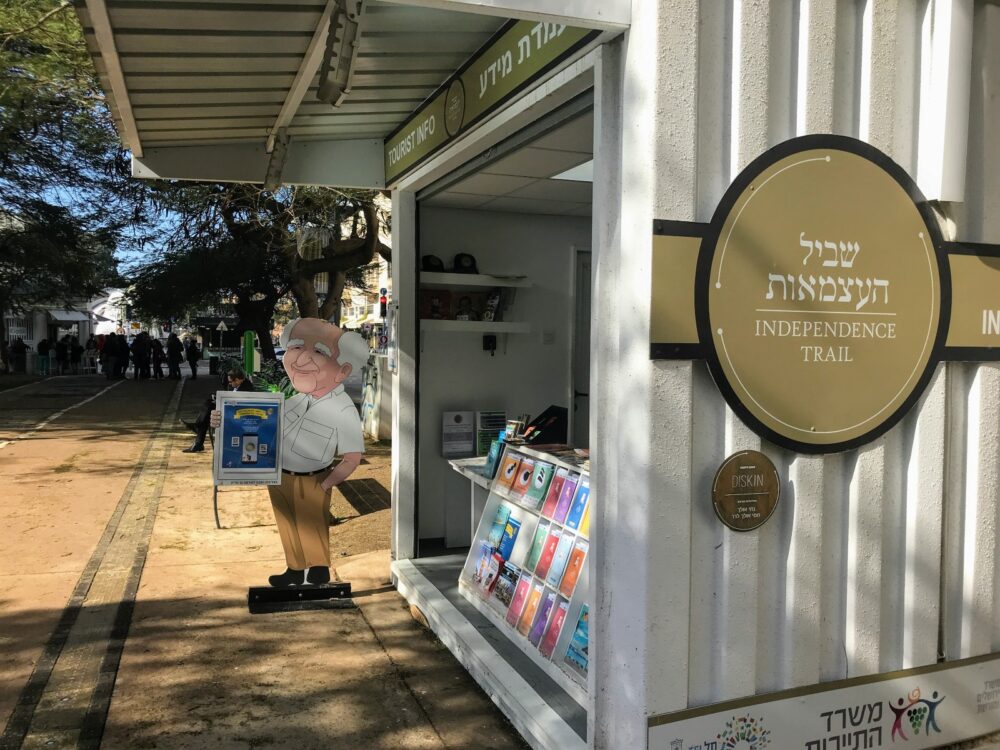
The one-kilometer trail starts at the city’s first food kiosk on the corner of Herzl Street and Rothschild Boulevard, passes by significant sites in the history of Tel Aviv and Israel between the founding of Tel Aviv, the first Hebrew city, in 1909 and the establishment of Israel in 1948.
Just follow the brass strip embedded in the ground; it’s illuminated at night. Information is posted on signs along the trail in three languages, and maps are available for free in eight languages at the information booth on Rothschild Boulevard.
You can also download a free GPS-based application to your smartphone. Choose a local celebrity — Shlomo Artzi, Rivka Michaeli or Tal Mosseri — to narrate the route. The app plays relevant songs and incorporates VR, video clips, animation, unique collages and more.
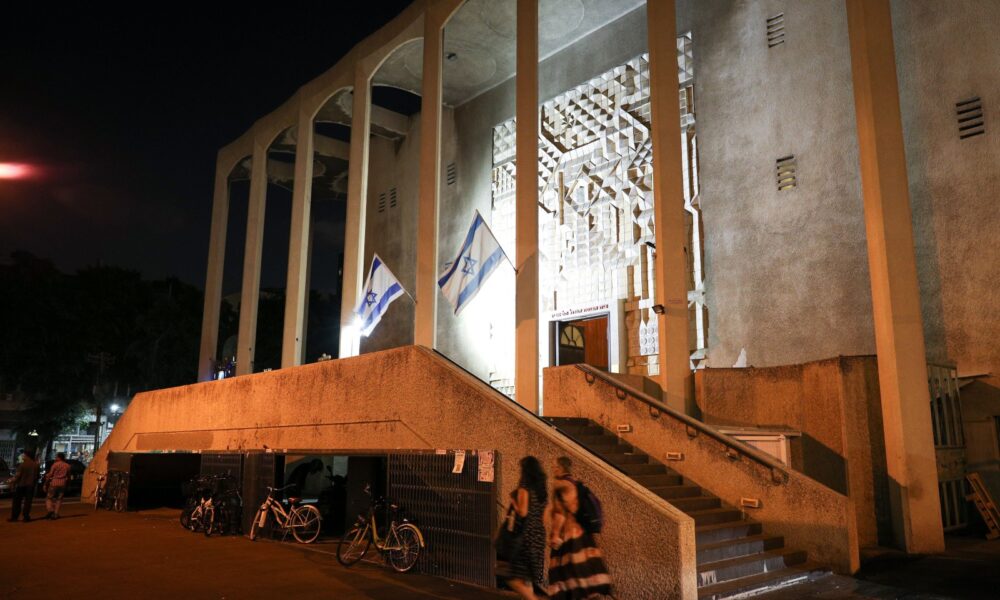
The stops include Independence Hall, the Haganah Museum, Bank of Israel, Shalom Mayer Tower, the Great Synagogue, the city’s first kiosk, the mosaic of Jaffa’s history created by Nahum Gutman, the home of Tel Aviv founder Akiva Arieh Weiss, the Founders Monument, and the statue of Mayor Meir Dizengoff riding his horse.
Tel Aviv Greeters
Tel Aviv Greeters offer free two-to-four-hour walks to numerous municipal destinations, led by local volunteers who just want to share their love of the city. No tipping allowed!
The Tel Aviv Greeters are part of the International Greeter Association, an informal virtual association of Greeter programs around the world.
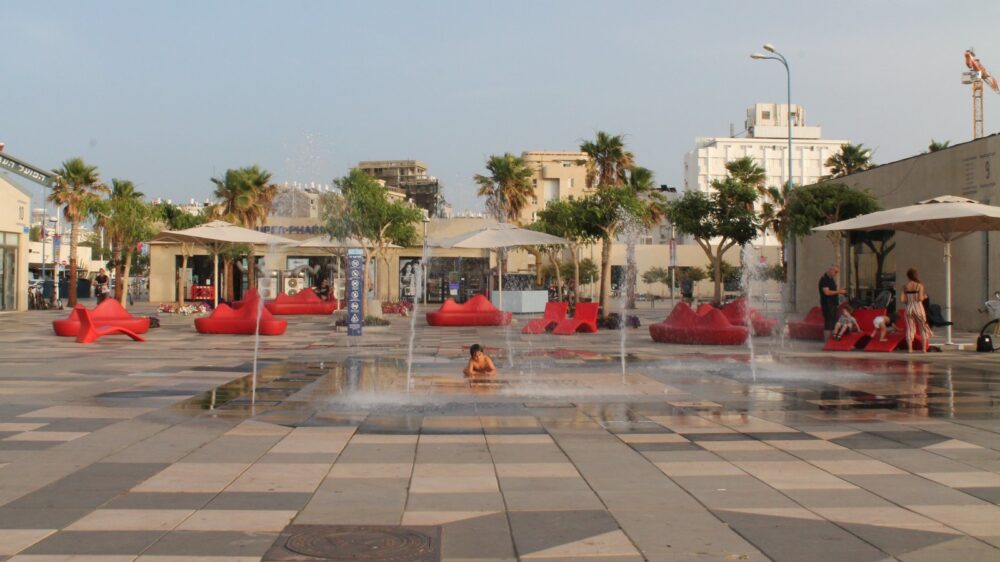
Walking the city with a local is a great option for families, groups of friends or solo travelers. The Tel Aviv Greeters can take you to museums, archeological sites, places to eat, nightlife, and hotspots such as Neveh Tzedek, Nachalat Binyamin, the Yemenite Quarter, Tel Aviv Port, Yarkon Park, Florentin, Old Jaffa, Carmel Market and the boardwalk along Tel Aviv’s 12 beaches.
Register online at least five days (but not more than a month) ahead of your “Greet Date.”
Ben-Gurion House
One of the smallest museums and likely the most overlooked is Ben-Gurion House, a historic site at 17 Ben-Gurion Boulevard that served as an additional residence for Israel’s first prime minister, David Ben-Gurion.
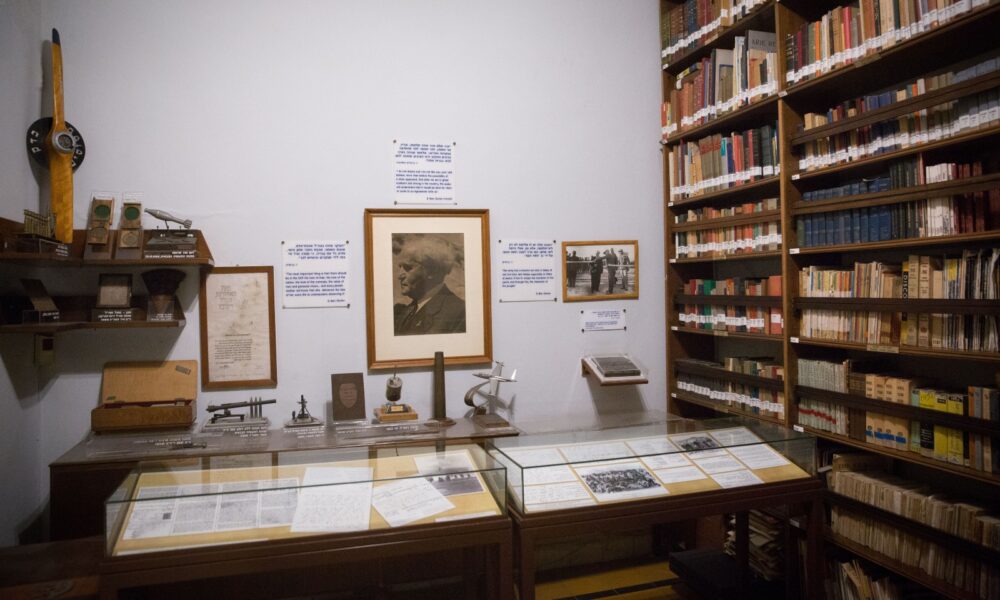
Visitors can see Ben-Gurion’s library, his family’s sleeping quarters and the study where he worked. Take a free guided tour of the house in English and learn about Ben-Gurion’s life work. The House is open for individual and group visits daily.
Reservations: info@bg-house.org or +972-(0)3-522-1010. Visitors who come without a scheduled group can receive an audio guide and pamphlet in English.
Walking tours of Tel Aviv
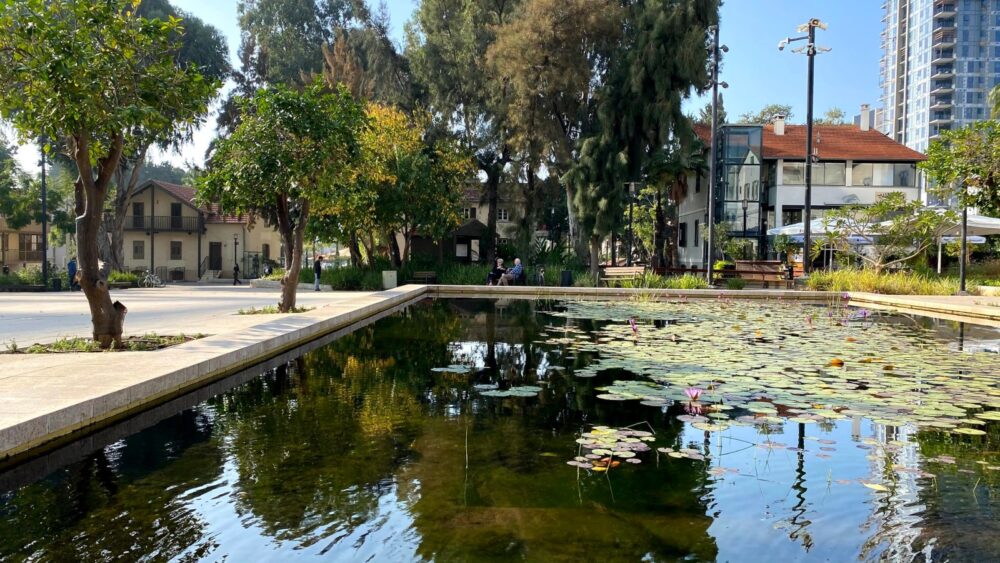
Tel Aviv Global and Tourism offers a variety of guided free walking tours to suit a wide range of interests, available in English (check the schedule).
Among the many choices: Rothschild Boulevard, Sarona Market, Neveh Tzedek/Hatachana Compound (built on the site of the Ottoman-period railroad that transported passengers between Jaffa and Jerusalem), Old Jaffa, Carmel Market, Levinsky Market, Florentin/Lehi Museum/street art, Tel Aviv Opera House, Cameri Theater, and Christian houses of worship in Jaffa.
People-watching on the promenade
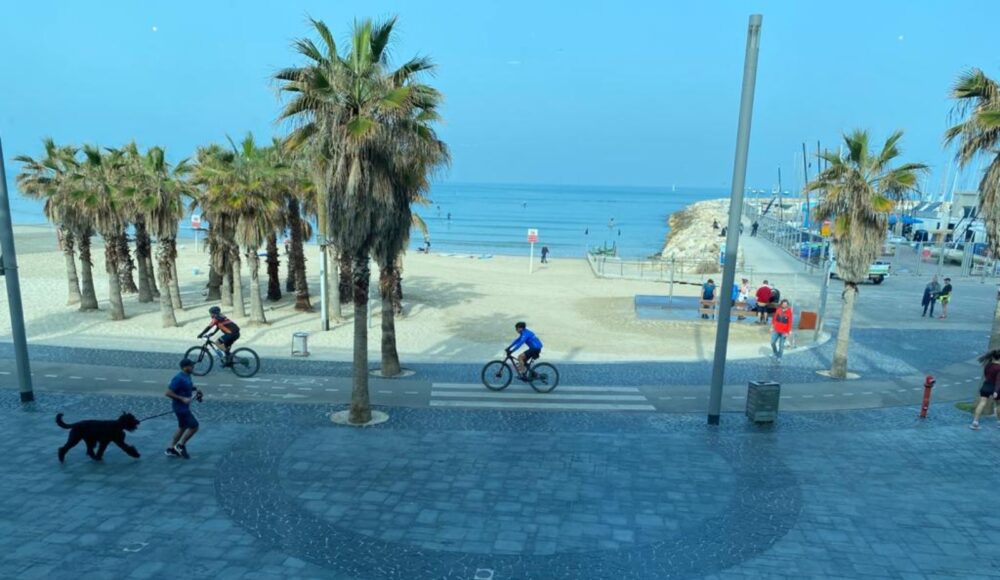
The Tel Aviv-Yafo promenade is a bustling beachside walkway stretching from Old Jaffa in the south to the Tel Aviv Port in the north. Along the way, you will witness gorgeous Mediterranean vistas and – this is the best part – an incredible cross-section of the residents of Tel Aviv.
At any hour of the day or night, you’ll see Tel Avivians of all ages out there strolling, biking, jogging, scootering, skating, playing beach volleyball, working out with personal trainers, walking dogs, running, pushing baby strollers and playing music. And on Saturdays evenings, there’s folk-dancing on the promenade next to Gordon Beach.
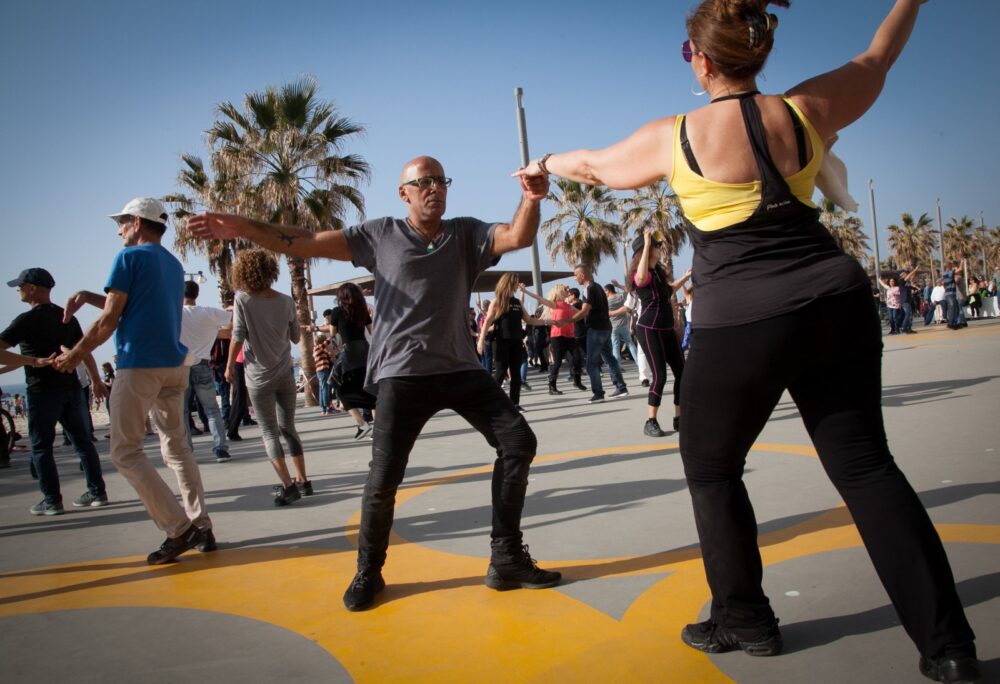
FIVE IN HAIFA
Bahá’í Gardens
The crowning jewel of this northern city on the bay is the Bahá’í Gardens, a UNESCO World Heritage Site.
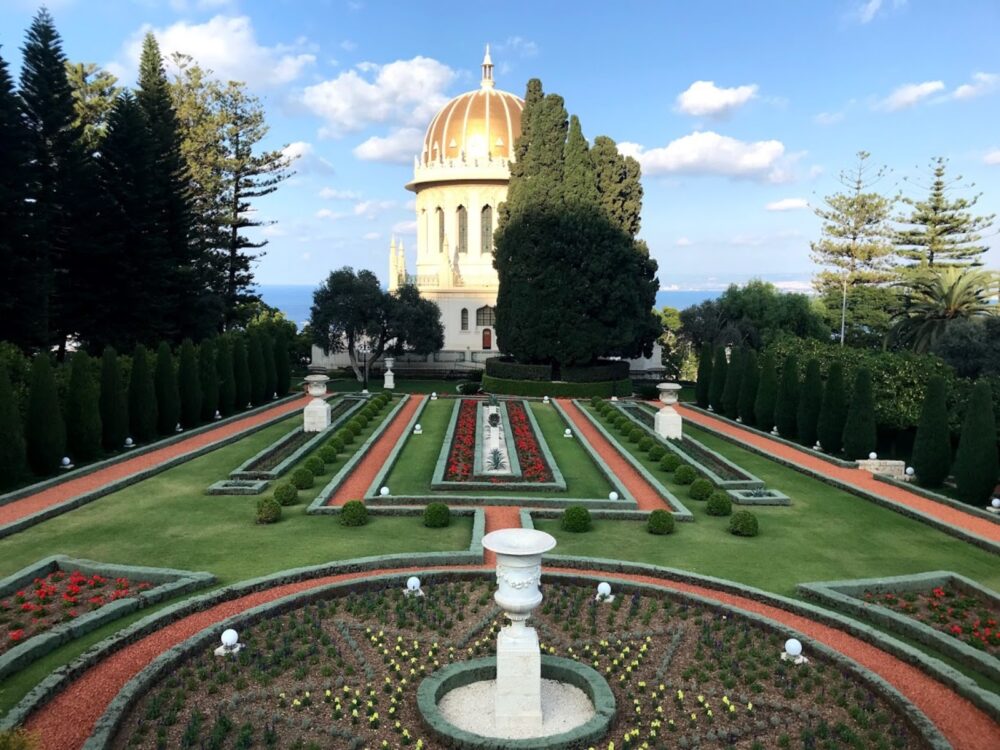
Nineteen meticulously landscaped terraces, designed as waves of light, extend up the northern slope of Mount Carmel. All the lines and curves of the gardens orient visitors to the golden-domed Shrine of the Báb, the resting place of the Prophet-Herald of the Bahá’í Faith, on the central terrace.
There are no fees for entry into the gardens or for the guided tours. Four sections are open to drop-in visitors seven days a week, while walk-in tours are conducted daily except Wednesdays.
Hecht Museum
The Reuben and Edith Hecht Museum at the University of Haifa offers free guided tours for groups in Hebrew, Arabic, English and Spanish, when booked in advance.
The permanent exhibitions include: “Archaeology of the Land of Israel from the Chalcolithic Period to the Mishnaic Talmudic Era (Roman and Byzantine Periods),” “Phoenicians on the Northern Coast of Israel in the Biblical Period” and “Ancient Crafts and Industries” (metalworking, woodworking, glassmaking, stone vessels industry, the art of writing, and the physician’s craft).
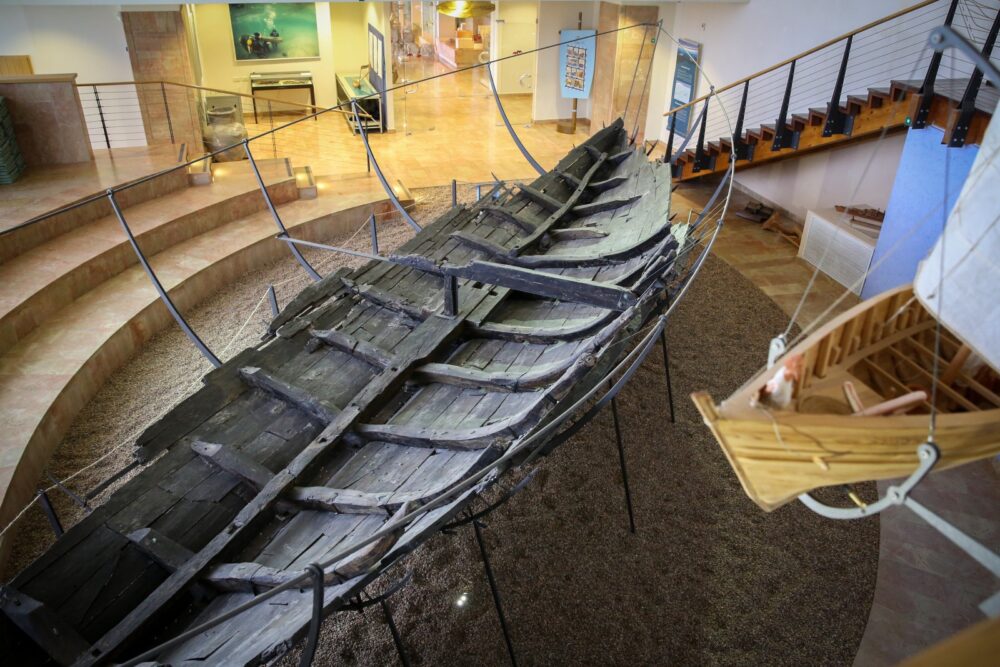
A special wing is dedicated to the study of ancient seafaring and features the hull of a 2,400-year-old ship, its anchor and the cargo.
Also displayed here are Reuben Hecht’s private collection of Impressionist and Jewish School of Paris painters’ works. Among the artists are Monet, Manet, Pissaro, Van Gogh, Modigliani and Chaim Soutine.
The museum’s grounds house reconstructed remains of ancient buildings including dwellings and a burial complex from the Negev Highlands, and an oil press from Hurbat Castra located at the southern entrance to Haifa.
Elijah’s Cave
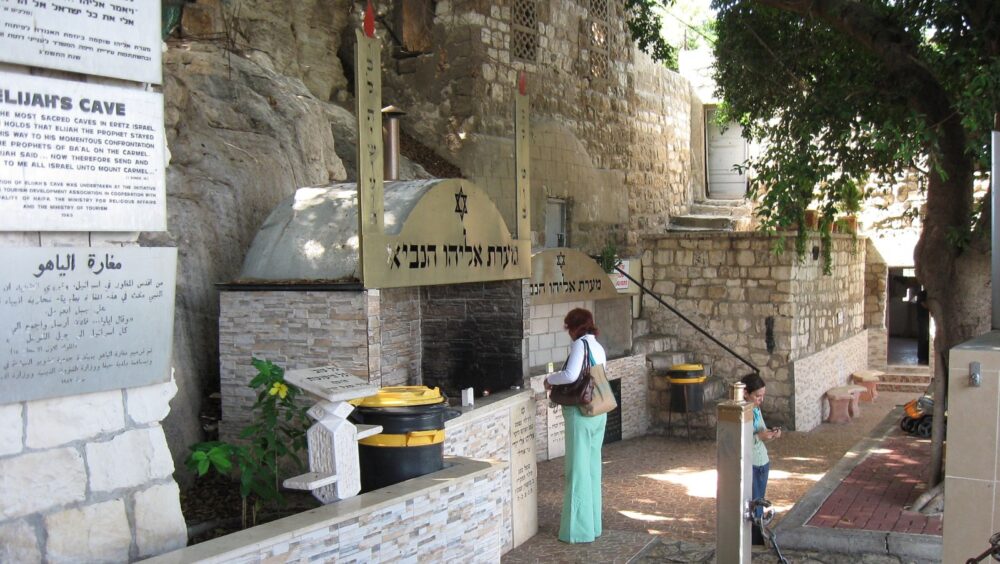
The cave of the Prophet Elijah has religious significance for Jews, Christians, Muslims and Druze alike.
Pilgrims attribute magical qualities and healing powers to the cave, where according to tradition, Elijah took refuge from the evil King Ahab. The cave has a Torah ark and a space in the ceiling where visitors place prayer notes. The walls of the cave are covered in writings left by pilgrims who visited through the centuries, including one signed by a Roman soldier named Germanous.
A monastery above Elijah’s cave is devoted to the Carmelites; Christians believe that Jesus and his family hid in this same cave when escaping King Herod.
Ursula Malbin Sculpture Garden
Not far from the Bahá’í Gardens is Mitzpor Shalom, the Peace Park, which contains 29 life-size and life like sculptures of children, young men, women and animals by Ursula Malbin. This is said to be the first open-air sculpture garden in the world devoted entirely to the works of an individual female artist.
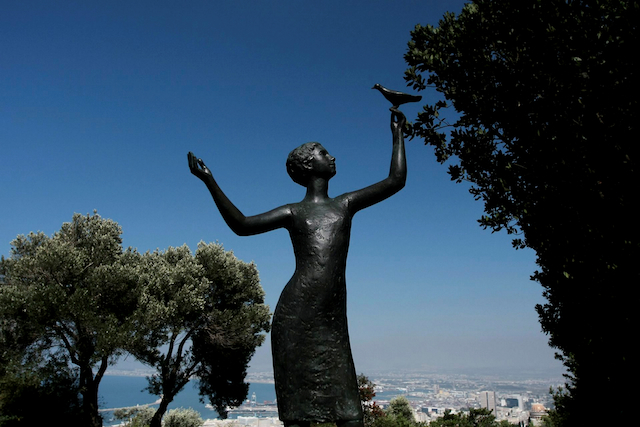
Malbin was born in Berlin and trained as a cabinetmaker. In 1939, she fled the Nazis to Switzerland, where she studied sculpting. In 1966 while visiting Israel, she bought an old house in Ein-Hod, the artists village about 12 miles south of Haifa. In 1978, she gifted her bronze works to the city of Haifa and they were placed in Mitzpor Shalom overlooking the harbor.
Other pieces by Malbin can be found in private and public gardens, schools and institutional buildings in Switzerland and North America. She died in 2020 at age 103.
The park is located at the intersection of Zionism Boulevard and Second in November Street.
Hanging Bridges of Nesher Park
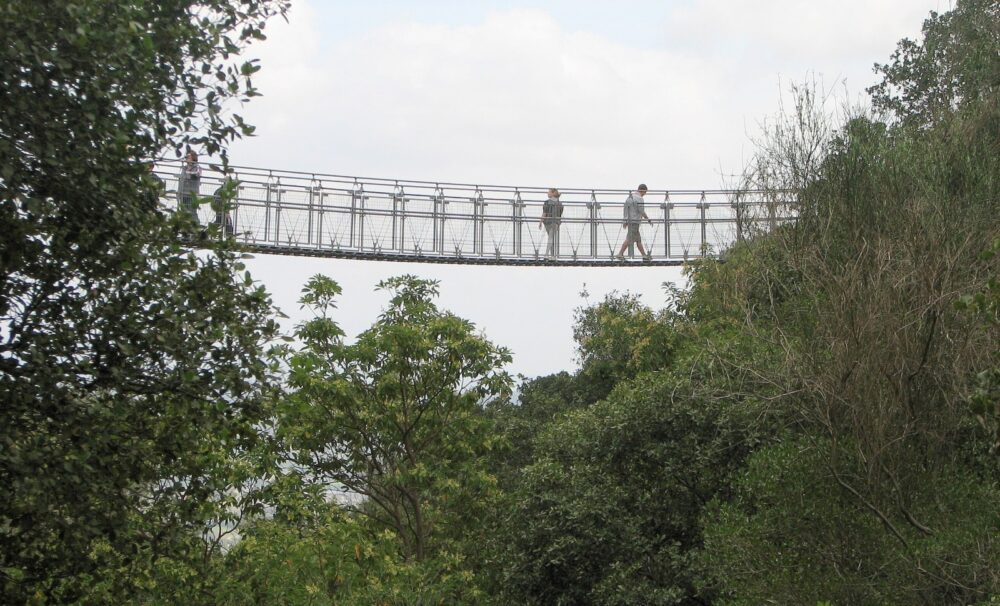
This idyllic park administered by KKL-JNF includes two steel bridges hanging above the Katya Stream, providing a rare view of the forested Carmel Mountain slope beneath the University of Haifa.
One of the bridges is currently closed for repairs. The other, about 230 feet in length, affords a thrilling experience just by walking its length as it sways in the breeze.
Nesher Park also contains hiking paths, fitness and sport installations, playground equipment, panoramic lookout points and picnic tables, perfect for the entire family all year round. The upper portion of the park is equipped with access paths and picnic tables for wheelchairs.
FIVE IN OTHER AREAS OF ISRAEL
Ramat Hanadiv, Zichron Ya’akov
With the exception of a 25-shekel fee for parking, entry to the beautiful Ramat Hanadiv Nature Park and Memorial Gardens is free and well worth a stop when you are in the charming northwest coastal city of Zichron Ya’akov.
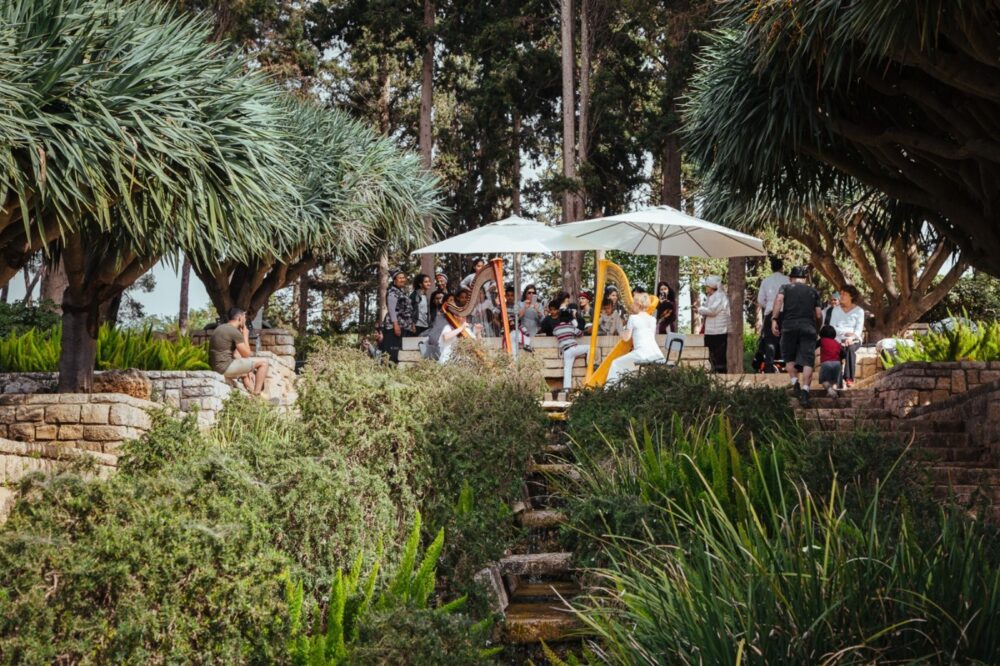
Located at the southern end of Mount Carmel, this 1,111-acre exquisitely landscaped park dedicated to the memory of Baron Edmond de Rothschild is described as “a gracious combination of European formality and Mediterranean-style vegetation.”
Also onsite is an archeological site and a sensory garden. Visitors can often catch a free concert on the grounds.
Ralli Museums, Caesarea
A whole lot of art and culture is available without charge at the two Ralli Museums located on a 40,000-square-meter campus in Caesarea. The Ralli Museums are sponsored by the nonprofit Harry Recanati Foundation.
One museum exhibits mainly Latin American and Spanish paintings and sculptures. Its permanent collection includes 40 works by Salvador Dali and a Sculpture Patio with larger pieces by artists including Rodin, Arman and André Masson. The second museum exhibits 16th to 18th century paintings depicting biblical themes.
The Story Gardens of Holon
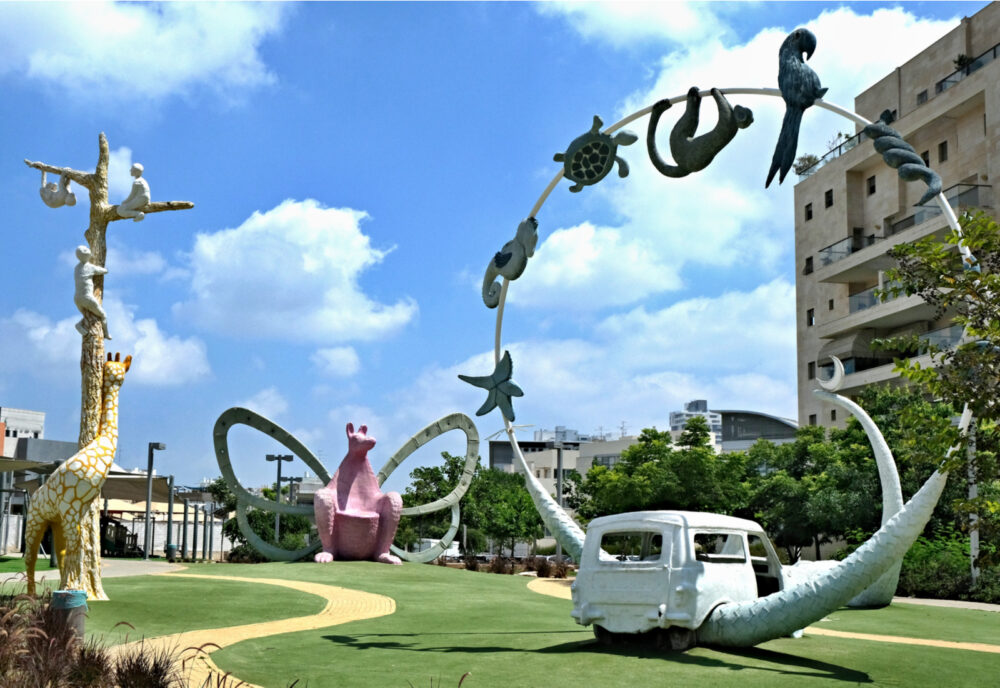
The Tel Aviv suburb of Holon, known as the “Children’s City” of Israel, houses many delights such as the Israel Children’s Museum, Design Museum, Cartoon Museum, Puppet Theater Center and others… but without spending any money your kids can play in more than 40 story gardens scattered across the city.
Each Story Garden is a unique environmental sculpture project by leading Israeli artists inspired by beloved Hebrew children’s stories.
Kids literally climb all over the characters from these stories, and you don’t have to know the story to love this tactile experience. If you know Hebrew, the stories are posted for you or your children to read, or you can find the book at the local children’s library.
Pirate Park at Lunada, Beersheva
Lunada – the Jack, Joseph and Morton Mandel Children’s Museum in Beersheva — is an experiential interactive museum for children aged 1 to 12 years old. At the foot of the museum, available free of charge, is a 15-acre wonderland full of hands-on activities, games and experiences geared to stimulate all five senses.
An ecologic lake, a pirate island with a ship, an amphitheater, giant playground, zipline and walking and biking paths make Lunada park a perfect place for a family to have fun for hours. It’s open daily.
https://youtu.be/nH_61EgpQ7o
The musical fountain of Eilat
The Red City resort’s sound and lightshow at the boardwalk’s tourist center, near the iMax pyramid, runs most nights after sundown (click here for details).
Jets of water spray up to the beat of music, changing colors and sounds based on the applause of spectators. Often there are free street performances going on in the same vicinity, making this a really fun, and totally free, way to kick off a night in Eilat.





